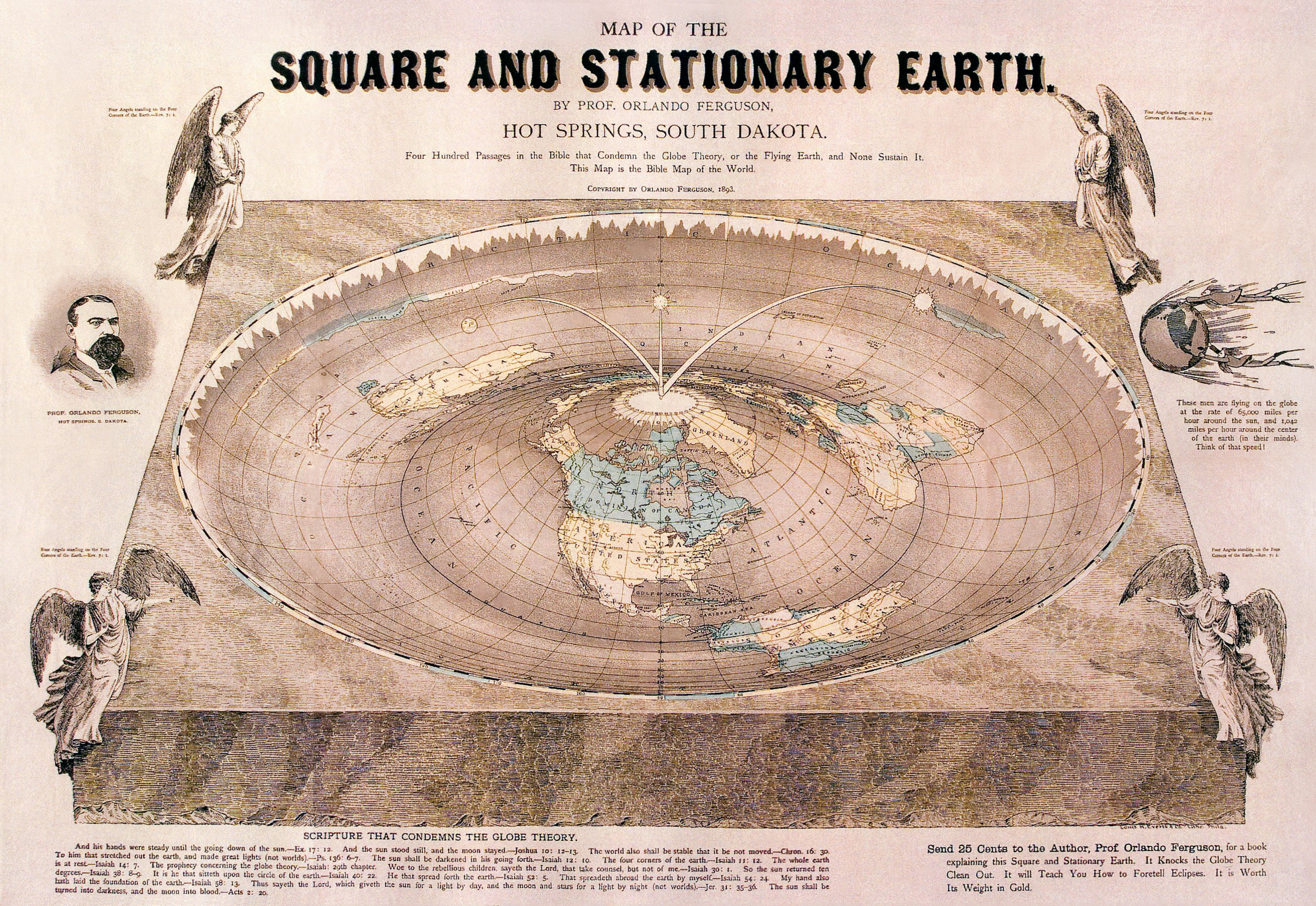....New discoveries in mainstream science just tell us about the physical universe; earth-shattering developments in the conspiracy-theory fringe tell us what’s happening to ourselves. ‘No Forests on Flat Earth’ might be the future of weirdness, and it’s utterly magnificent.
The response to the video has been huge—since it was first posted by a Crimean man calling himself Людин Рɣси, ‘There are no forests on Flat Earth Wake Up’ has been viewed hundreds of thousands of times, spawned hundreds of blog posts in the broader flat-earth-o-sphere and, at the time of writing, has gathered over
ten thousand response videos. There’s been an ‘
explainer,’ a ‘
decoding,’ a
biblical exegesis, a
roundtable discussion (in fact, many, many roundtable discussions), and, inevitably,
accusations that the precipitous popularity of the video is proof that it’s all a plot by the ‘control grid’ to distract from the real truth. Unfortunately, the ‘No Forests on Flat Earth’ video is also nearly an hour-and-a-half long. You should absolutely watch the whole thing—but if you’re not the kind of dedicated weirdo who wants to waste a decent chunk of their day watching ludic conspiracy-theory pseudogeology, I’m willing to give you a summary.
We start with a montage of forests, peaceful scenes studded with sunlight, the kind of pictures just waiting for some inspirational quote to be plastered on top of them. We’ve all seen forests, we all know what they are; how could anyone claim that they don’t exist? But our narrator knows better. “They make us think that this is a forest,” he tells us, “when you are actually looking at thirty-meter bushes. After watching this video, you will reverse your concept of forests by 360 degrees.” This isn’t a forest at all: only a diminished imitation. Thousands of years ago, a cataclysmic event destroyed 99% of the Earth’s biosphere, and when it happened, it took away the
real forests. Real trees are nothing like their stunted cousins, the miserable perishing scraps of wood that we see today; they were truly vast, hundreds of kilometers tall, magical organisms that sustained a total living ecology of the flat earth. These things were the anchor of a beautiful world that has now vanished forever. And how does he know? Because everywhere around us, we can see their stumps.
The first piece of evidence is Devils Tower in Wyoming, U.S.A., a great geological stub (pictured above) rising out of the rolling lowlands on all sides, four hundred meters of towering igneous rock that may have formed as a volcanic plug, rising out of the ground as the sedimentary stone that surrounded it slowly eroded away. O
r so they want you to think. See its intricate hexagonal columns, curving up in a way that looks almost organic. See the perfection of its sheared-flat summit. Doesn’t this remind you of something?
For several minutes, our guide to this new reality shows us images of mesas, plateaux, flat-topped mountains, chunks of isolated cliffs, placed next to pictures of astoundingly similar-looking tree-stumps. Every time there’s the same challenge. ‘Name ten differences.’ You can’t. ‘There are only two differences: material and size.’ These things look the same: they are the same thing.
Not just mesas—ordinary mountains are contrasted with the shattered, splintered remnants of trees; the Giant’s Causeway in Ireland is revealed to be a petrified organic structure, because (we’re told) cooling lava simply does not assume these shapes. There is no such thing as a mountain; there is no such thing as inert rock. Everything we walk on was once living wood, the mountain ranges were once tremendous forests reaching up to the stellar canopy, providing a link between humanity and the celestial spheres. The earth was really flat. But some malignant power cut all these trees down using vast machinery, and ever since then they’ve been gouging into the corpse of the earth, mining the dead trees for precious minerals, carving deep quarries that we, in our ignorance, call gorges and canyons (you can see the monstrous tracks leading away from Antarctic valleys); we think they’re natural, we even think that the traces of our destruction are somehow beautiful.
...






















